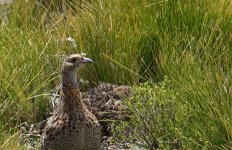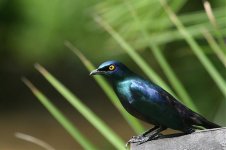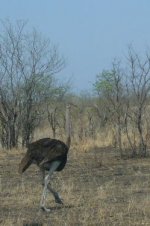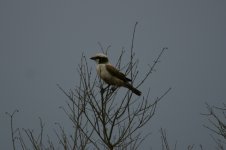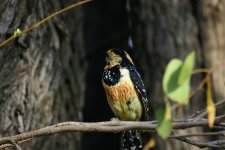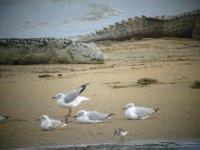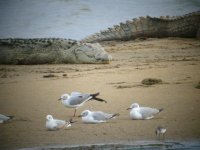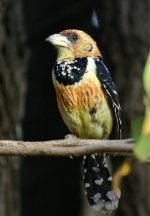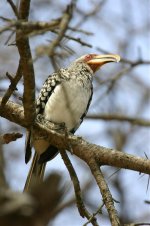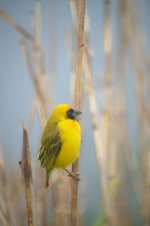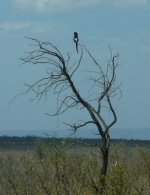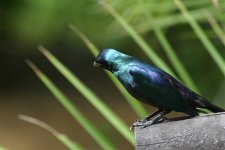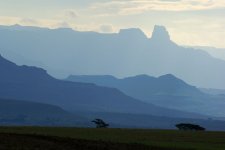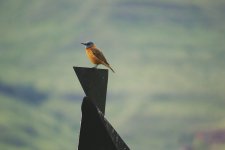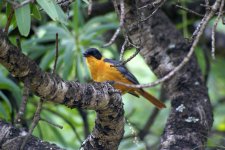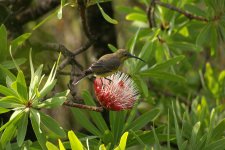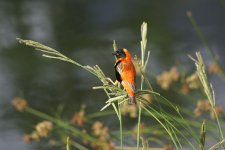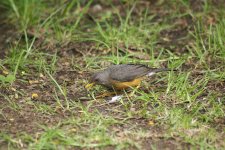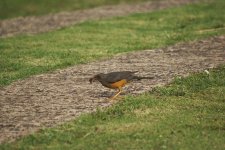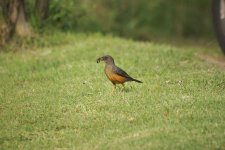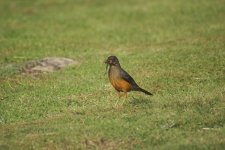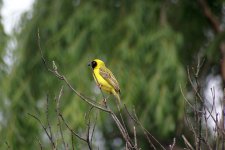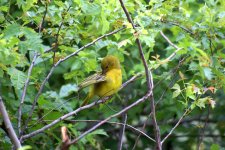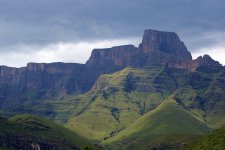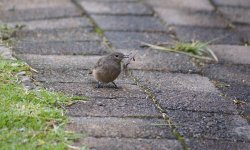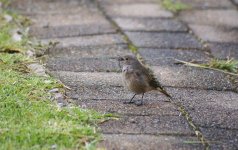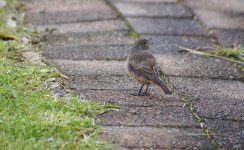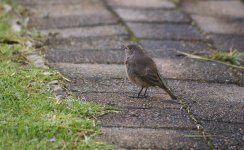Dave: Hope you have a great time in Okavango! Sadly I didn't get a photo of the slaty Egret, but we saw them at Xaxanaka. The parrots were right in our campsite at the same location eating the sausage tree fruit.
Thanks,
Jo[/QUOTE
Hi, Jo,
Thanks for the good wishes, and congrats on your excellent record of sightings. Your leopard is absolutely beautiful. I have attached for your information my sightings list for my recent trip, which involved birding from Lake Ngami through Maun into the central Delta. The total came to 208. I'll elaborate later, but my computer blew up and had to be replaced, and I'm still getting my photo processing sorted out.
Apalis, Yellow-breasted
Babbler, Arrow-marked
Babbler, Hartlaub's
Babbler, Southern Pied
Barbet, Acacia Pied
Barbet, Black-collared
Barbet, Crested
Bateleur
Batis, Chinspot
Bee-eater, Blue-cheeked
Bee-eater, European
Bee-eater, Little
Bee-eater, Swallow-tailed
Bee-eater, White-fronted
Boubou, Swamp
Brubru
Buffalo-weaver, Red-billed
Bulbul, Dark-capped
Bunting, Cinnamon-breasted
Bunting, Golden-breasted
Bush-shrike, Orange-breasted
Bustard, Black-bellied
Buzzard, Steppe
Camaroptera, Grey-backed
Canary, Black-throated
Cisticola, Chirping
Cisticola, Rattling
Cisticola, Zitting
Cormorant, Reed
Coucal, Coppery-tailed
Coucal, Senegal
Coucal. White-browed
Crake, African
Crake, Black
Crane, Wattled
Crombec, Long-billed
Crow, Pied
Cuckoo, African
Cuckoo, Black
Cuckoo, Diderick
Cuckoo, Jacobin
Cuckoo, Levaillant's
Darter, African
Dove, African Mourning
Dove, Laughing
Dove, Namaqua
Dove, Red-eyed
Drongo, Fork-tailed
Duck, Comb
Duck, White-faced
Duck, Yellow-billed
Eagle, Steppe
Eagle, Tawny
Eagle, Wahlberg's
Eagle-owl, Verreaux's
Egret, Cattle
Egret, Great
Egret, Little
Egret, Slaty
Egret, Yellow-billed
Eremomela, Burnt-necked
Firefinch, Brown
Firefinch, Jameson's
Firefinch, Red-billed
Fish-eagle, African
Flycatcher, African Dusky
Flycatcher, Marico
Flycatcher, Spotted
Francolin, Crested
Go-away Bird, Grey
Goose, Egyptian
Goose, Spurwinged
Greenbul, Yellow-bellied
Green-pigeon, African
Greenshank, Common
Ground-hornbill, Southern
Guineafowl, Helmeted
Hamerkop
Hawk-eagle, African
Heron, Black
Heron, Black-headed
Heron, Goliath
Heron, Green-backed
Heron, Grey
Heron, Purple
Heron, Rufous-bellied
Heron, Squacco
Honeyguide, Greater
Hoopoe, African
Hornbill, African Grey
Hornbill, Red-billed
Hornbill, Southern Yellow-billled
Ibis, African Sacred
Ibis, Glossy
Jacana, African
Kestrel, Dickinson's
Kestrel, Greater
Kingfisher, Grey-headed
Kingfisher, Malachite
Kingfisher, Pied
Kingfisher, Striped
Kingfisher, Woodland
Kite, Black-shouldered
Kite, Yellow-billed
Korhaan, Red-crested
Lapwing, Blacksmith
Lapwing, Crowned
Lapwing, Long-toed
Lark, Flappet
Lark, Sabota
Masked-weaver, Lesser
Masked-weaver, Southern
Mousebird, Red-faced
Neddicky
Night-heron, Black-crowned
Openbill, African
Oriole, Black-headed
Owl, Barn
Owlet, African Barred
Oxpecker, Red-billed
Oxpecker, Yellow-billed
Painted-snipe, Greater
Palm-swift, African
Paradise-flycatcher, African
Paradise-whydah, Long-tailed
Parrot, Meyer's
Pelican, Great White
Pelican, Pink-backed
Pipit, African
Pipit, Plain-backed
Plover, Three-banded
Pochard, Southern
Pratincole, Collared
Prinia, Black-chested
Prinia, Tawny-flanked
Puffback, Black-backed
Pygmy-goose, African
Pytilia, Green-winged
Quail, Common
Quail, Harlequin
Quelea, Red-billed
Robin-chat, White-browed
Roller, Broad-billed
Roller, Lilac-breasted
Roller, Rufous-crowned (Purple)
Ruff
Sandgrouse, Burchell's
Sandgrouse, Double-banded
Sandpiper, Common
Sandpiper. Marsh
Sandpiper, Wood
Scimitarbill, Common
Scops-owl, African
Scrub-robin, Kalahari
Scrub-robin, White-browed
Shikra
Shrike, Crimson-breasted
Shrike, Lesser Grey
Shrike, Magpie
Shrike, Red-backed
Snake-eagle, Black-chested
Snake-eagle, Brown
Snipe, African
Sparrow. Southern Grey-headed
Sparrow-weaver, White-browed
Spoonbill, African
Spur-fowl, Red-billed
Spur-fowl, Swainson's
Starling, Burchell's
Starling, Greater-blue-eared
Starling, Meve's
Starling, Wattled
Stilt, Black-winged
Stork, Marabou
Stork, Saddle-billed
Stork, Yellow-billed
Sunbird, Marico
Sunbird, Scarlet-chested
Sunbird, White-bellied
Swallow, Barn
Swallow, Red-breasted
Swift, Common
Tchagra, Black-crowned
Tchagra, Brown-crowned
Teal, Hottentot
Teal, Red-billed
Tern, Whiskered
Tern, White-winged
Thick-knee, Water
Thrush, Groundscraper
Tinkerbird, Yellow-fronted
Tit, Southern Black
Tit-babbler, Chestnut-vented
Turtle-dove, Cape
Vulture, Hooded
Vulture, White-backed
Waxbill, Black-faced
Waxbill, Blue
Waxbill, Common
Weaver, Golden
Weaver, Red-headed
Weaver, Southern Brown-thoated
Whydah, Pin-tailed
Whydah, Shaft-tailed
Wood-dove, Emerald-spotted
Wood-hoopoe, Green
Woodpecker, Bearded
Woodpecker, Golden-tailed
Best wishes,
Dave




